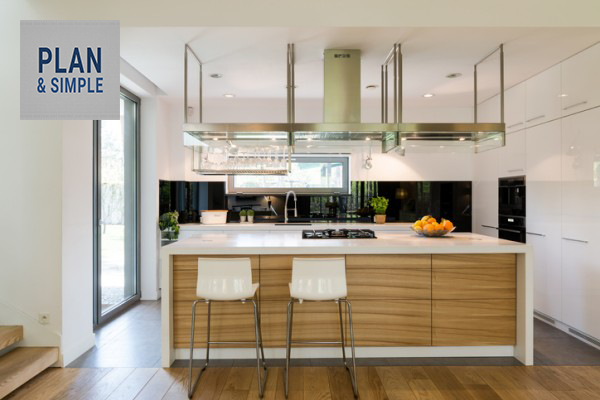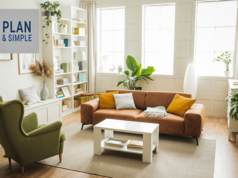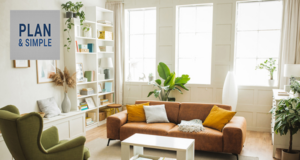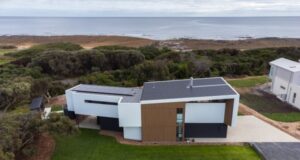
As a residential building designer based in Melbourne, one of the most frequently overlooked aspects of home design is lighting. Whether it’s the natural light that fills a room in the morning or the carefully selected artificial lighting that sets the tone in the evening, lighting has the power to transform the way a space feels, functions and performs.
At Anabode Design and Drafting, I know from experience that lighting design is just as important as layout, materials and finishes, and it should be considered early in the architectural drafting process.
In this article, I’ll explain why natural and artificial lighting are integral to good design, why they should work together, and how you can avoid common mistakes by engaging professionals early in your project.
Natural light: The foundation of great design
Natural light is one of the most valuable resources in home design and it’s free! Properly harnessed, it can fill a room with warmth and energy, enhancing the mood and functionality of your home.
When we design homes at Anabode Design and Drafting, we always begin by considering the orientation of the building on the block. How does the sun move across the site throughout the day? Where is the north-facing light? Which areas need the most light?
Natural light can enhance visual comfort and improve your well-being, and it’s critical to plan your architectural drafting around these principles. By strategically placing windows and considering shading elements (like eaves, pergolas or awnings), we ensure that every room gets the right amount of sunlight throughout the day.
One of the biggest mistakes people make is not considering how the sun moves across the home at different times. This is crucial in kitchens, living spaces and bedrooms. For example, a north-facing living area maximises daylight in winter, but without the right shading, it can cause overheating in summer. It’s all about balance.
Artificial lighting: Creating mood and highlighting design
While natural light is essential, artificial lighting is where you can get creative. Artificial lighting allows you to control the mood and atmosphere of a space, and it can bring out the architectural features of your home. Whether you’re using task lighting in the kitchen, accent lighting to highlight artwork or ambient lighting in the living room to create warmth, artificial light is the tool that brings the space to life when the sun sets.
Unlike natural light, artificial lighting allows us to set the tone and make a room feel inviting, dramatic or even intimate. Lighting is often used to accentuate textures in walls, furniture or flooring, enhancing the design’s depth. A well-placed wall washer or downlight can highlight architectural features that would otherwise go unnoticed.
Natural light and artificial light work hand in hand. Natural light fills the home with energy and warmth during the day, while artificial lighting adapts to different times of day and creates dynamic spaces. This interplay between the two types of lighting is essential for functional design that serves the needs of the occupants.
The risks of poor lighting design
One of the biggest pitfalls of lighting design is treating it as an afterthought. Often, lighting is left to the end of a build or renovation project, when the walls are already painted and the furniture is in place. This can result in a home that feels unbalanced, flat or even uncomfortable.
If you don’t plan for the placement and types of light sources early in the design process, you may find yourself retrofitting lighting solutions, which can be costly and disruptive. Poor lighting design can create dark zones in spaces that should feel bright and welcoming or create harsh lighting in areas that need a softer, more relaxing environment.
Another common mistake is over-lighting or under-lighting areas. Too much light can make a room feel stark or sterile, while too little can leave the space feeling dark and cramped. The goal is to achieve a balance where the lighting is both functional and atmospheric.
Why early collaboration is key
As a highly qualified building designer, I can’t stress enough the value of engaging with a designer and lighting consultant early on. Architectural drafting isn’t just about walls, windows and doors; it’s about understanding how light will interact with your home.
At Anabode Design and Drafting, we integrate lighting design into the overall architectural plan. This ensures the lighting not only complements the design but also enhances the functionality of each room. Early collaboration allows us to think about things like energy efficiency, daylight control, and how different lighting systems will interact with the structure of the home.
Involving lighting early in the process helps avoid costly and time-consuming revisions later on. It also ensures that your home’s lighting is coherent with the overall design, making it more energy-efficient and comfortable.
Practical tips for home owners
Here are a few simple tips to ensure that lighting plays its part in your home’s design:
Observe the natural light: Walk around your site at different times of the day to see how the light changes. This can help inform where you place windows and which rooms need more or less light.
Think about how each space will be used: Will the space need task lighting (for example, reading, cooking)? Or do you want it to be more ambient? Consider lighting needs for day and night.
Ask your designer about lighting integration: Make sure lighting is considered early as part of your overall design, not just a fitting at the end.
Budget for lighting design: It’s essential to allocate a portion of your build budget for professional lighting design, as it’s a key component of the final result.
Conclusion: Lighting makes all the difference
Many people who visit a home designed by Anabode Design and Drafting often can’t explain why the space feels so comfortable and welcoming. As a highly qualified building designer, I can tell you that the secret is in the flow, space and light, both day and night.
Great design begins with a clear understanding of how light moves through a home. By designing with light in mind from the start, you can create spaces that feel inviting, functional and dynamic throughout the day. Lighting design is not just about illuminating a room; it’s about creating an atmosphere, enhancing your home’s features, and making every space feel just right.
If you’re planning a new build or renovation, don’t wait until the end of the process to think about lighting. Work with a residential building designer early in your project, and you’ll enjoy a home that’s both beautifully designed and thoughtfully illuminated.
This article was written by Andrew Slattery, founder of Anabode Design and Drafting. Anabode Design provides residential design and drafting services across Melbourne’s eastern suburbs, specialising in custom homes, extensions and renovations tailored to your family’s needs and lifestyle.





